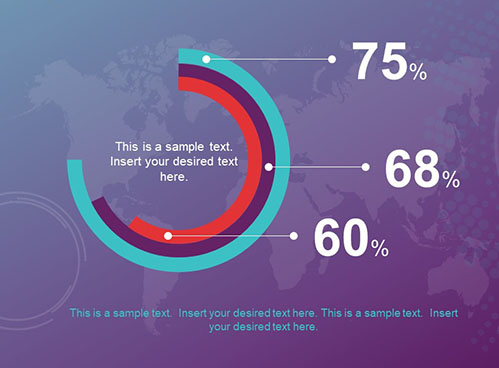In the fast-paced eCommerce sector, relevancy is a critical success factor. Your online business needs to stay at par with advancements in marketing technologies and tactics to survive—leave alone dominate.
But how do you stay relevant in an industry that keeps evolving so fast?
One way to do that is to simply be on the lookout for new eCommerce trends. Statistics companies flood the internet every year with reports reviewing the most significant marketing trends. With some research and analysis, you can find suitable emerging tactics and technologies to remain relevant and competitive.
But as the demands of running an online business would have it, you might be too busy or simply lack the desire to scour through tons of reports—whose data can be radically different and sometimes misleading.
Lucky for you, we’ve done the heavy lifting and compiled 7 eCommerce trends worthy of implementing in 2020.
#1 Voice search
Browser search remains one of the main sources of organic traffic and revenue for online businesses. Over the years, digital marketers have been building their SEO strategies around text search in a bid search to rank higher on search engines.
Voice search is expected to make up to 50% of search queries by 2020, and this shift in consumer search behavior will mean changes in SEO for online entrepreneurs. If the search query is a voice request, search engines will assign top search results to sites with voice control functionality.
Therefore, to avoid losing organic search traffic and revenue in 2020, start integrating a voice search feature on your company website.
#2 AI technology
For a long time, eCommerce systems have been reactive. But with the looming adoption of machine learning in 2020, many online marketing processes will soon be proactive.
For instance – through AI predictive analysis, online businesses will gain the ability to identify consumers who are most likely to abandon cart, make a purchase, or return items. With this info, you’ll be better equipped to personalize the experience of each consumer.
In addition to basic machine learning, collaborative AI technologies are poised to become the staple of online retail. For example, many PunchOut catalogs now use CMXL to allow purchasing agents to go to a supplier’s website and make purchases within their own procurement applications.
#3 AR and VR
One of the biggest challenges online stores have been facing over the years is the lack of means for customers to try on products before buying them. AR and VR technologies will solve this problem by allowing consumers to virtually try on products before making a purchase.
eCommerce juggernauts already know how big AR and VR will be for the eCommerce sector in 2020, and have invested in both technologies to stay ahead of the curve. Warby Parker, for instance, has an app that uses AR to allow customers to virtually try on different pairs of glasses before placing an order.
IKEA and Amazon also have similar technologies that allow online shoppers to remotely test how different types of furniture would look in their living space.
#4 Dark mode
Dark mode changes the background of a mobile OS to black. This reduces eye strain to allow mobile devices to adjust to ambient lighting more efficiently and extend battery life.
Earlier in 2019, Apple led the way by introducing dark mode in iOS 13. Meanwhile, Google launched “Dark mode” on Android 10.
Perhaps following in the steps of the two trendsetters, mobile app developers, social media site designers, and just about every business in the eCommerce sector have been churning out dark mode versions of their websites and apps for the later part of 2019. And you can expect this trend to continue into 2020.
#5 Progressive Web Apps (PWA)
A progressive web app refers to a mobile website that looks and feels like a native mobile app. Websites like Gmail and Twitter have been using PWA for a while now, and the technology is slowly bleeding over into eCommerce websites such as AliExpress.
With consumers increasingly expecting an omnichannel experience from brands, using PWAs will no longer be seen as “something extra”. It’ll be a necessity for enhancing consumer shopping experiences.
While it’s clear that you need to implement PWAs in 2020, it’s more important to pay attention to why this technology is gaining popularity in the first place. By adding the appearance and functionality of a mobile app to your site, PWAs will help you improve site navigability, speed, and responsiveness. These factors have always been critical for the success of any online business.
#6 Re-Commerce
Re-commerce simply means selling second-hand products online. The market for second-hand items has never been bigger and has been tipped to explode in the next five years.
Several factors have contributed to this trend, including:
- Growing focus on sustainability
- The need to buy highly sought-after items at a cheaper price
- The need to stay ahead of and/or keep up with trends in industries such as fashion
If your business sells products that can be returned and resold without losing value, you’ll want to get in on this emerging trend. But as you do that, ensure that you provide value for your customers while still enjoying a decent markup.
#7 Minimalism
Over the years, the complexity of many eCommerce sites has been making it difficult for consumers to navigate. In 2020, however, you can expect to see many online retailers simplify their web designs so they can “meet customers where they are”.
Forward-thinking segments such as the CBD industry are leading the chase in this regard. They’re doing this with simpler, crispier sites. And you should follow suit. Minimal design will help you generate larger fonts, increase white space, and simplify your layout and navigation. Ultimately improving consumer experiences.
eCommerce shopping trends 2020: the takeaway
Ultimately, you’ll need to think of how applicable any of these trends are to your business before implementing them.
Specifically, consider how a prospective trend will affect the experience of your consumers before investing in it. Each online business is unique, and what works in one eCommerce system may not be appropriate for another.
Have a successful 2020!








![60 stats & trends that will define the future of eCommerce [Infographic]](https://crayondata.ai/wp-content/uploads/2022/05/eCom-374x288-1.png)
